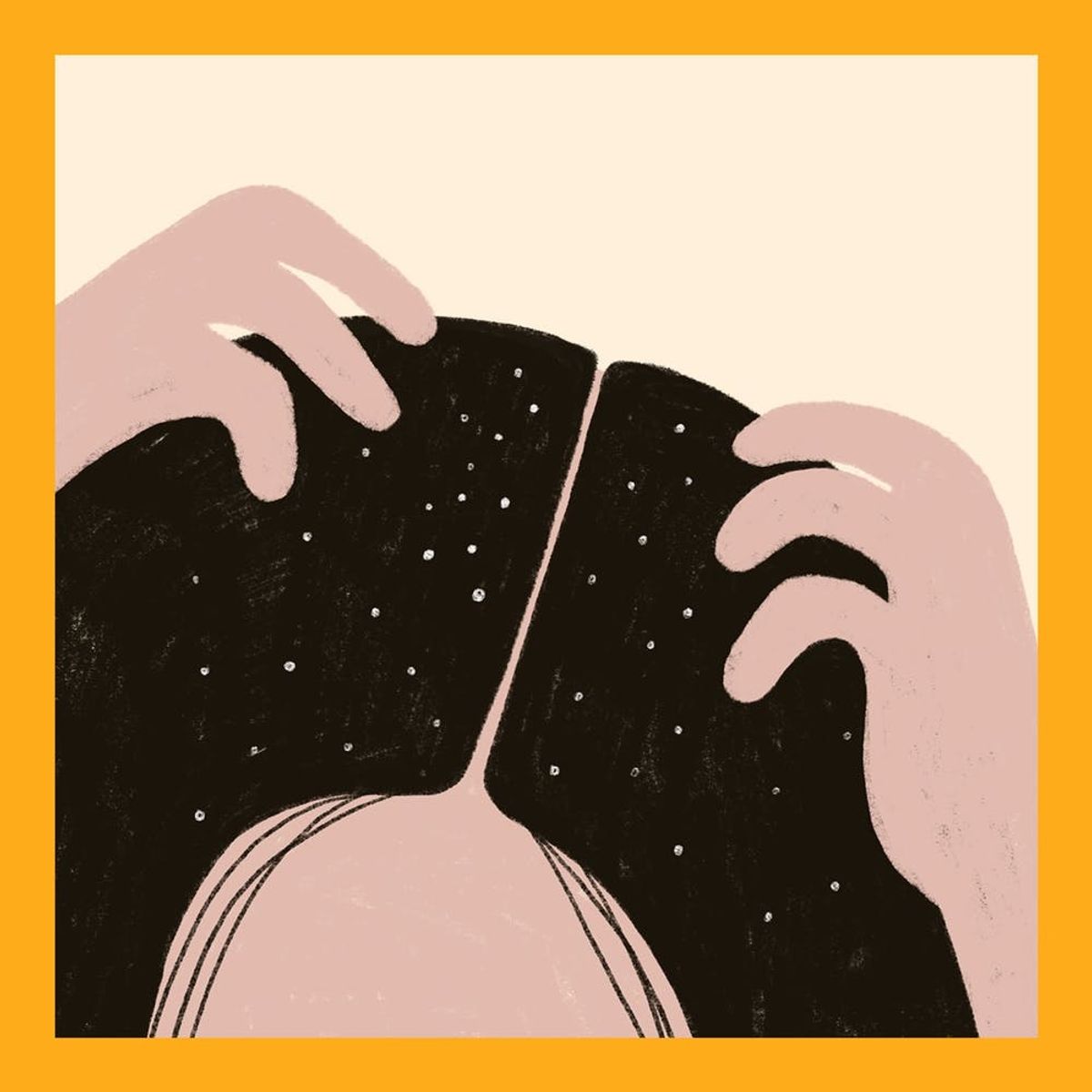The truth about your flakes.
What Is My Dandruff Saying About My Health?

As much as we love swapping tips and tricks to solve our biggest fashion and beauty dilemmas, there are some questions we may not feel comfortable asking our friends about, let alone Google without going incognito. Don’t worry. We’ve got you covered. In this series, we’re tackling those embarrassing queries by turning to experts in the field to get you the answers you need — minus any awkward feelings.

It’s a story as old as time: We’re about to head out of the door when we notice something white on our shoulders. Is it lint? A stray gray hair that fell? Nope, it’s dreaded dandruff. While most definitely a nuisance, the pale flakes that dot our heads and shoulders can be a sign of an underlying health issue. Below, we take a deep dive into what causes a seemingly-snow-covered crown and how to get rid of those white bits for good.
What Is dandruff?

No, it isn’t another name for dry scalp. Instead, dandruff is an anti-inflammatory response that is triggered by yeast in oil-producing areas of our bodies. When the substance clogs the sebaceous glands, it causes oil to overproduce on our scalps and leads to dead skin cells sticking together and flaking off. (Photo via powerofforever/ Getty)
what IS dandruff saying about my health?

If you’ve spotted the telltale flakes, you’re not alone. An article published in the Journal of Clinical and Investigative Dermatology found that dandruff affects more than 50 percent of adults worldwide and usually doesn’t signify anything serious health-wise. Deborah Longwill, board-certified dermatologist and founder of Miami Center for Dermatology, says that dandruff may be a genetic condition, or can even form from not washing your hair enough, psoriasis, eczema, or an allergic reaction to a hair product. More concerning issues could be to blame as auto-immune and neurological disorders also play a role. (Photo via CasarsaGuru/ Getty)
Seborrheic dermatitis (SD), a skin condition marked by patches, plaque, scales, and inflammation that affects a large percentage of the population (and an even larger percentage of those with AIDS), might also be causing dandruff in the form of yellow, crusty flakes. While it occurs on the scalp, SD can affect other areas that are rich in oil glands like your eyebrows, groin, and armpits.
How can i treat a flaky scalp?

To alleviate the itchiness (and constantly shedding dead skin cells), San Diego-based dermatologist Melanie Palm recommends staying away from rich, occlusive, and deeply emollient shampoos and conditioners that are likely to encourage yeast growth and prevent proper scalp exfoliation. She also says to reduce stress, and to use a humidifier to keep temperamental flare-ups at bay. (Photo via Tetra Images/ Getty)
When it comes to treating dandruff, try a shampoo that’s formulated to target the condition. Palm suggests stocking up on products that contain micronized selenium sulfide (an ingredient that helps treat yeast and skin overgrowth), zinc pyrithione (an anti-inflammatory agent), salicylic acid (which helps exfoliate and slough away dead skin cells), and anti-yeast ingredients like ciclopirox and ketoconazole.
If SD is the underlying cause of your flakes, however, Longwill points out that anti-dandruff shampoos can actually make conditions like seborrheic dermatitis even worse. Instead, consider making a few lifestyle changes. According to the Mayo Clinic, you can help control SD by avoiding styling products, as well as skin and hair products made with alcohol. If all else fails, head to your dermatologist for a prescription anti-fungal treatment.
Have any more awkward beauty questions? Let us know @BritandCo!



















